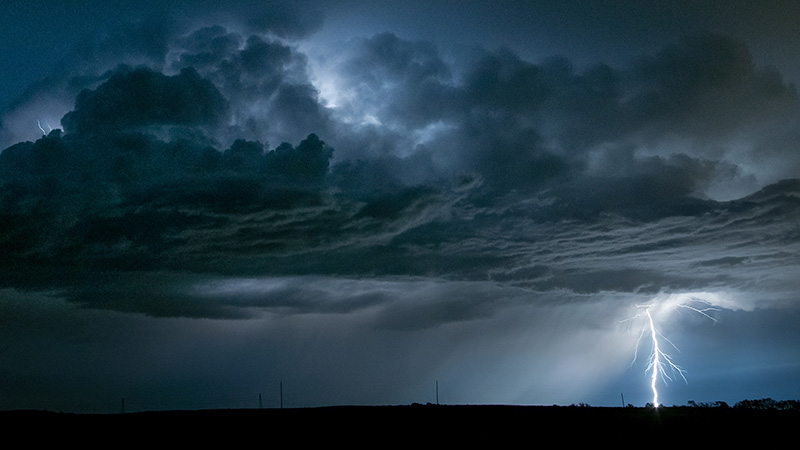July 14, 2025

Story by Ryan Gauthier, rjgauthier@health.missouri.edu
When the wind howls and sirens wail, most people instinctively seek shelter. But what happens when devastating tornadoes strike in the middle of the night and catch communities literally in their sleep?
New research by Mizzou School of Social Work faculty member Jennifer First is exploring this critical concern, focusing on the deadly impact of nocturnal tornadoes in the Midwest. Her latest project, funded by an $80,000 National Science Foundation RAPID award, will study the aftermath of tornado outbreaks that swept across the Midwest and Southeast in March 2025 and resulted in 42 fatalities.
Nocturnal tornadoes are notoriously dangerous, First said, often resulting in twice as many deaths as tornadoes during daylight hours.
“When tornadoes happen at night, there’s an element of vulnerability because people are likely sleeping in their homes,” she said. “You’re vulnerable if you don’t get the warning, and you’re also vulnerable if you’re in housing that isn’t wind resistant.”
The National Science Foundation’s RAPID initiative is designed to support research when there’s an urgent need, such as after a natural disaster or unexpected event. The project is a collaborative effort with research partners at Missouri University of Science and Technology.
First and her team at Mizzou will handle the social science aspect; Grace Yan, an engineering professor at Missouri S&T, will look at wind-related impacts on structures. The two teams will combine their expertise to understand the complex interplay between storm warning mechanisms, human behavior and structural integrity during nighttime tornado events.
The Missouri S&T team is using drones to gather visual damage data from structures, which they’re augmenting with a specialized app for precise ground-level damage assessment and satellite data for broader coverage. This allows them to analyze factors like roof failure, wall collapse and foundation displacement. Meanwhile, First’s team will conduct surveys to understand how residents received or failed to receive warnings as well as what actions they took as a result.
First hopes the project can help inform policy and enhance public education regarding tornado preparedness. She believes the findings will also provide further insight into how structures are built in tornado-prone areas and explore ways of strengthening existing housing. Beyond that, she wants to raise public awareness about the heightened risks of nighttime tornadoes and educate communities on effective response strategies.
“We want to prevent injuries, and we want to prevent deaths,” First said. “This is the goal of this research.”
First recommends individuals have multiple methods of receiving warnings at night instead of solely relying on outdoor sirens. Weather radios and Wireless Emergency Alerts on smartphones can serve as crucial backups. She also said it’s vital that people have action plans for seeking shelter, particularly if they live in a mobile home or a structure without a basement.
The research comes at a time when Tornado Alley appears to be shifting eastward, First said, with an increasing frequency of events in Missouri and other parts of the Midwest. These shifting patterns could bring tornadoes during seasons when it gets darker earlier, further amplifying the risks of nocturnal storms.
The latest project is First’s second to draw funding from the National Science Foundation’s RAPID initiative. She received funding earlier this year to examine why some communities were more vulnerable during Hurricane Helene.
